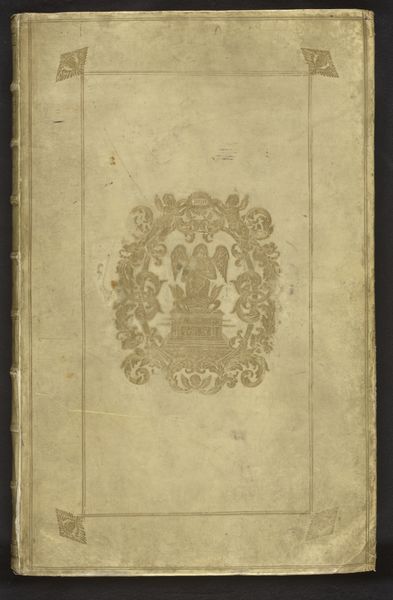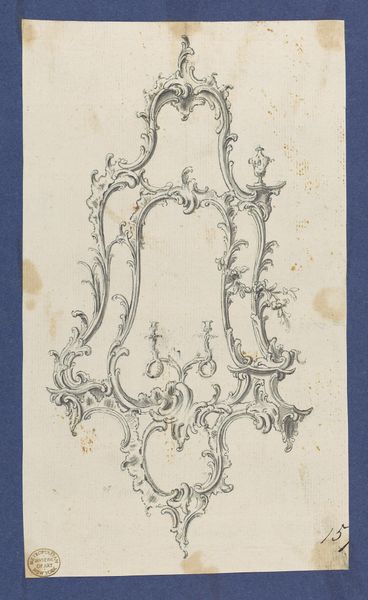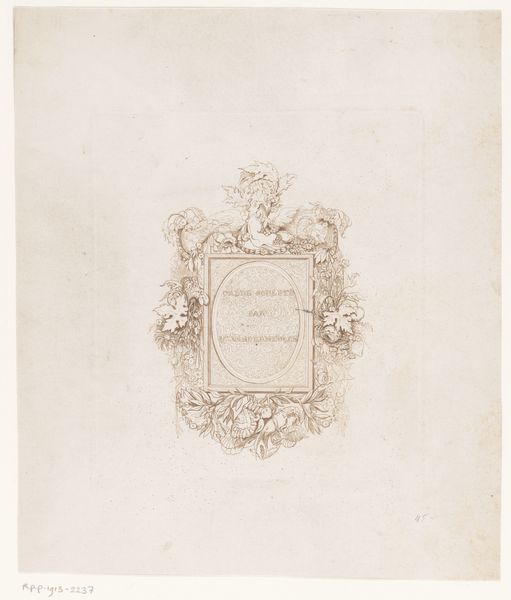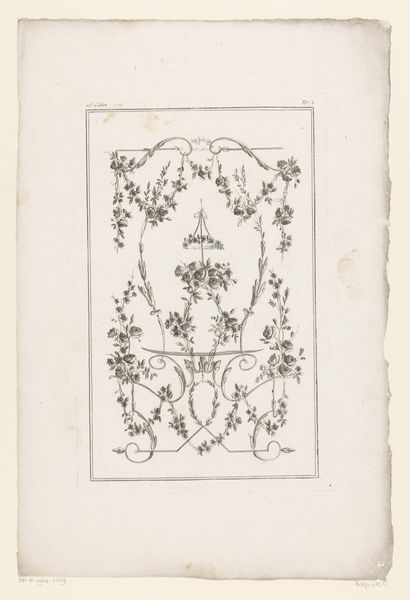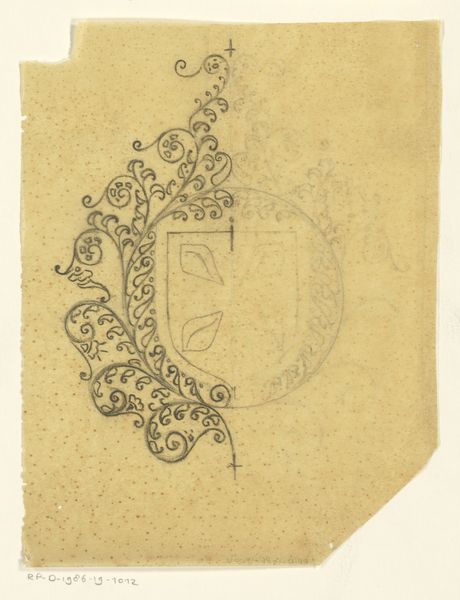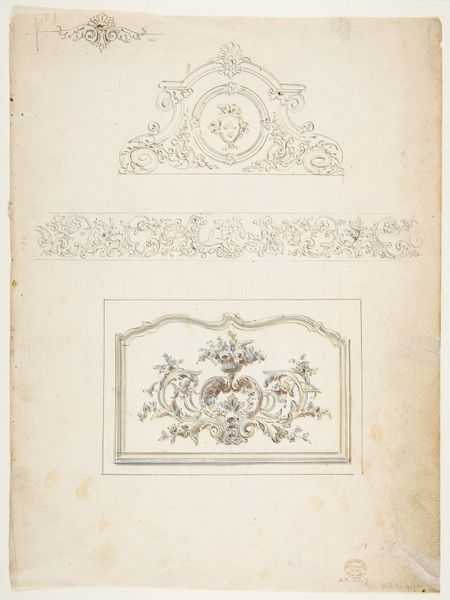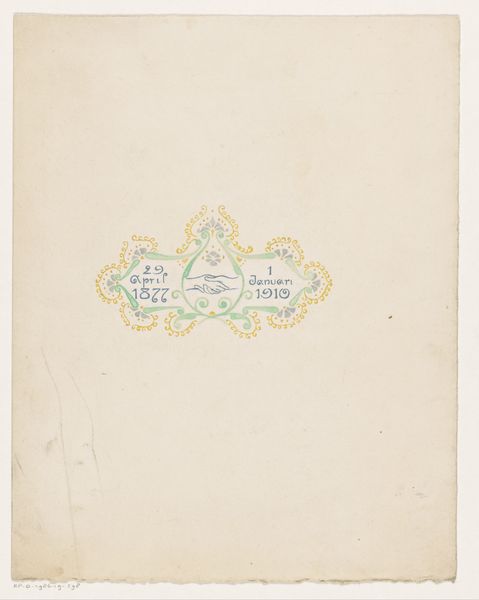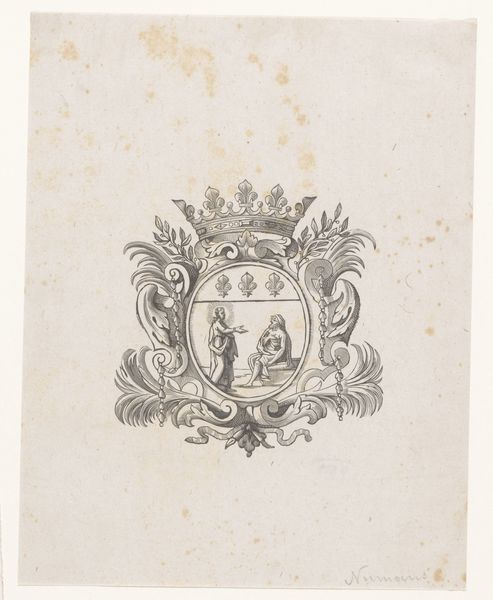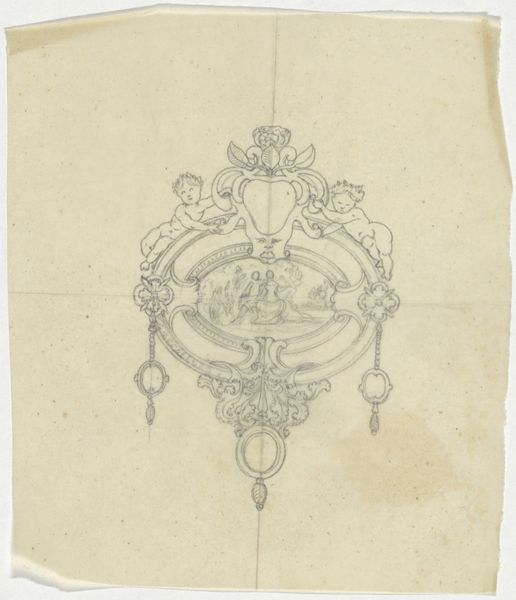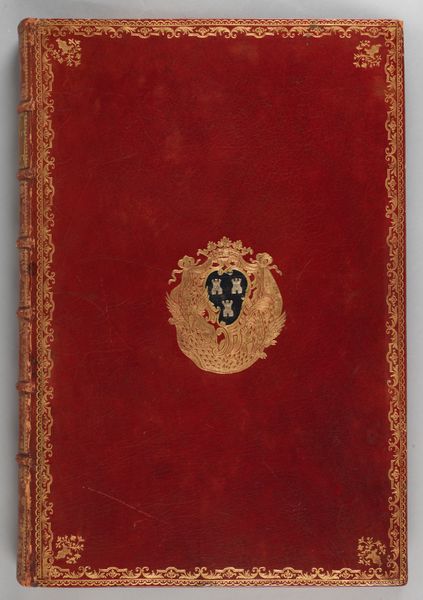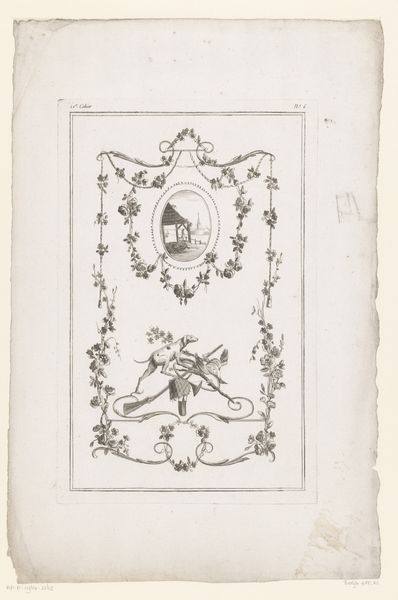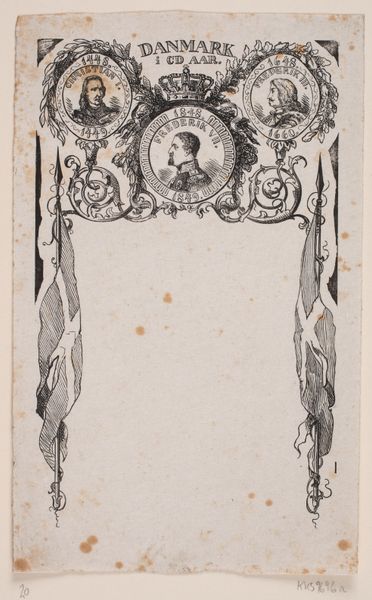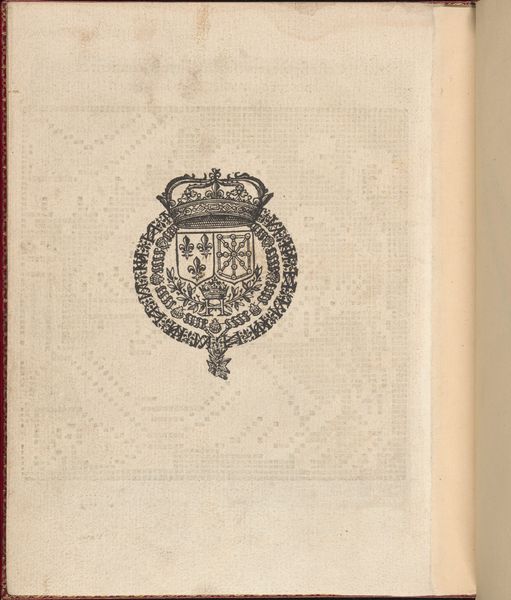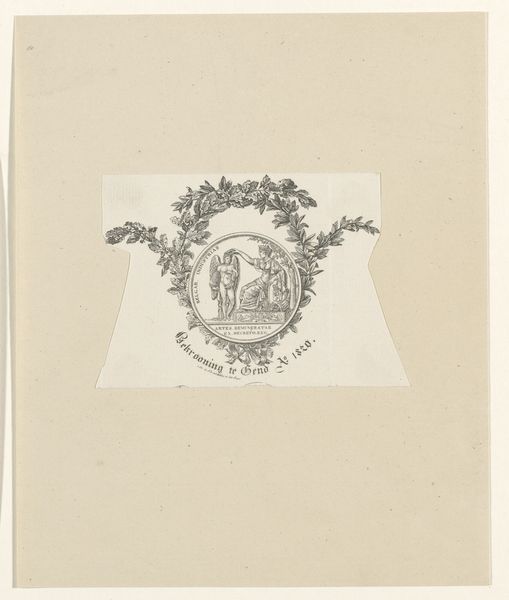
drawing, ornament, coloured-pencil, paper, ink
#
portrait
#
drawing
#
ornament
#
coloured-pencil
#
baroque
#
paper
#
ink
#
coloured pencil
#
ink colored
Dimensions: height 186 mm, width 241 mm
Copyright: Rijks Museum: Open Domain
Curator: This intriguing drawing presents "Monogram JJCM, van Jean Jacques Charron, markies van Menars," created sometime between 1650 and 1676. It employs ink and colored pencil on paper. Editor: At first glance, I find it quite austere. Despite the ornamentation, the limited palette gives it a feeling of restraint. Curator: The starkness, I think, speaks volumes about the era. The rigid social hierarchies demanded displays of power, but also imposed a sense of decorum, particularly on the aristocracy. Jean Jacques Charron, as Marquis, would have had to carefully balance assertion and restraint. Editor: Absolutely. It is fascinating how these emblems served as concise visual statements of lineage and identity. The crown speaks for itself, of course. But look at the intertwining initials – a sophisticated dance of ego and dynasty! I imagine these emblems played a critical role in legitimizing noble lineage within the volatile politics of the time. Curator: Indeed, it’s tempting to view it solely as a piece of decorative art, but consider the Marquis' political positioning during the Fronde. Power wasn't simply inherited; it was constantly negotiated and re-asserted. The careful craftsmanship, the costly materials—it’s all deliberate. The monogram functions as a form of branding, declaring his status. Editor: Yes, that interplay between public image and personal identity resonates deeply! And what of the leaves and that delicate ribbon beneath the monogram? I am drawn to the way those shapes frame and amplify the impact of his royal seal. They provide such a visual narrative! Curator: I'm with you. The ribbon and floral elements seem to serve as visual cues, reinforcing this emblem of status. How might they shape, challenge, or conform to the expectations surrounding his roles as a man, an aristocrat, a political actor within the period? It adds to the visual texture, making it an object open for a multi-layered analysis of social forces at play. Editor: Considering that this work’s composition embodies personal narrative alongside larger structural forces makes me appreciate the emotional and historical weight such an object carries. Curator: Absolutely. There is always an interrelation between power, identity, and visual representation! Editor: The beauty, in this case, stems from both what is visible and what has been deliberately suppressed!
Comments
No comments
Be the first to comment and join the conversation on the ultimate creative platform.
